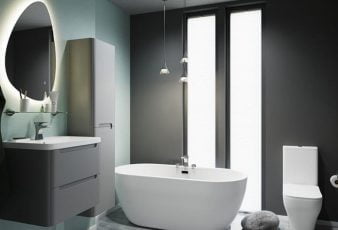Wood heaters have been providing warmth to cold homes in one form or another, perhaps since man learned how to make fire. The primary source of energy was always firewood from felled trees, with the only thing changing being the vessel in which the fire was contained.
Faced with approaching winter, a significant number of households realized that their heating bills were rising as electric and gas-powered heating options became more and more expensive. This caused a shift to occur, and an increasing number of people continually turn back to wood heaters and fires as heating solutions for their homes.
Choosing a Wood Heater-
Modern-day wood heaters are more than the simple rudimentary vessels of old. More consideration is given to their construction as safety guidelines, and design aesthetics govern their modeling and use. When choosing a wood heater, one must take into consideration such factors as:
Type:
Two main types of wood heaters are commonly used in Australia: Convection heaters and radiant heaters. Each provides warmth primarily by the method implied in its name. Convection heaters are a little more advantageous in that the heat they give out is more even throughout the room, while radiant heaters tend to remain warmer the closer to the main heater you are.
Space:
Your heater will be installed in the room provides crucial clues as to the heater’s specifications that you can consider. First among the list of considerations is the question of size. How big is your space? What is the layout of your home? Space refers not only to the area in which the heater will be primarily located but also the scope of the space that will need heating. If possible, you want your heater to be adequate to warm up the whole room or multiple rooms, so take in your space and use it as the first point of measurement.
Size and Design:
Once you have a clear idea of the space, it is time to select your heater’s size. Size, in this case, will often go hand in hand with design. The design of your wood heater is a matter of personal style preferences, which, in turn, may affect the size of the heater you can get. Naturally, the larger the heater, the higher it’s capacity to provide heat. Give these factors some careful thought before you move ahead so that you are not left disappointed. Having the wrong size heater may not only be inconsistent but can also prove to be dangerous.
Insulation:
The insulation of your home is a key determinant of the efficacy of your wood heater. The better insulated your home is, the more effective your wood heater will be. Heat loss through poorly insulated walls and subpar seals around windows and doors will cause the heater to perform at lower levels, rendering it redundant, at best. Furniture impacts the intensities of warmth that can be achieved once the heater has been turned on.
If you are unsure about how well your home is insulated, it is recommended that you purchase a radiant heater, as less heat will be lost to the environs than in the case of convection heaters. The latter do best in homes that are well insulated; regular to high ceilings are a bonus.
Read Also:





























